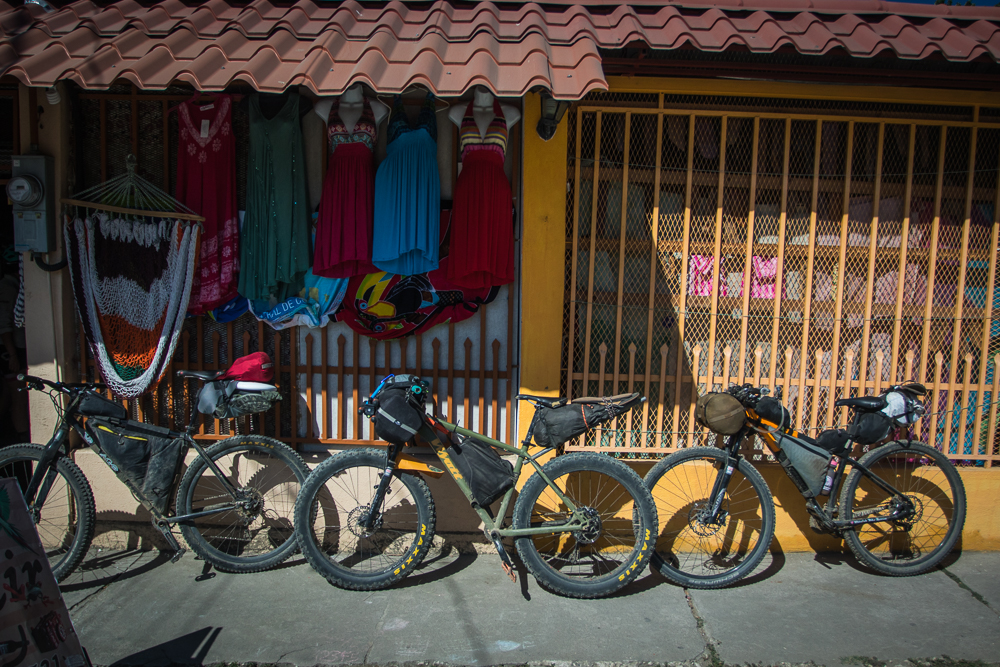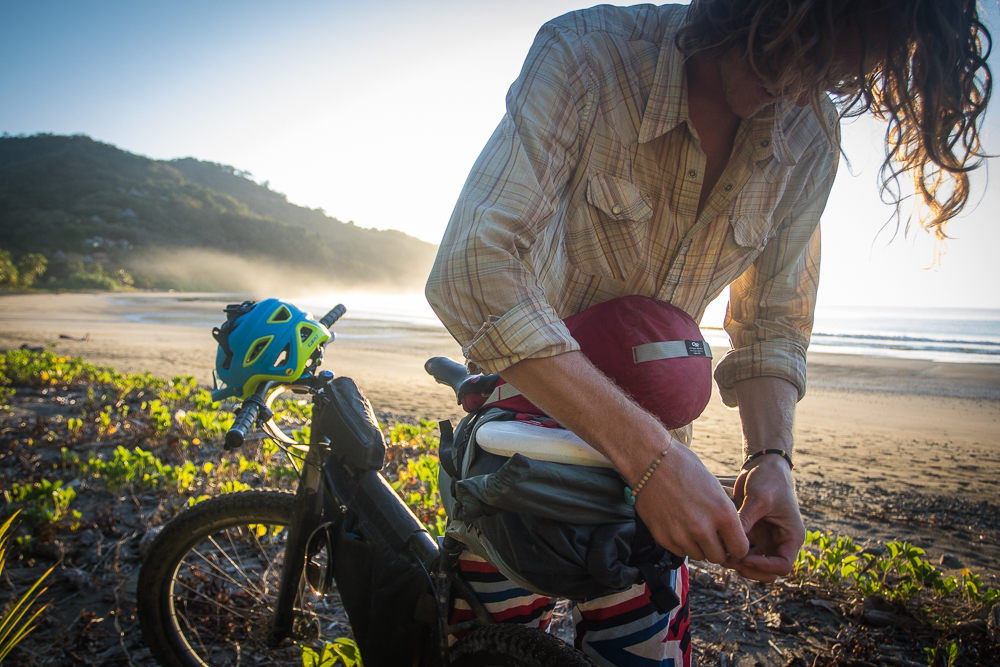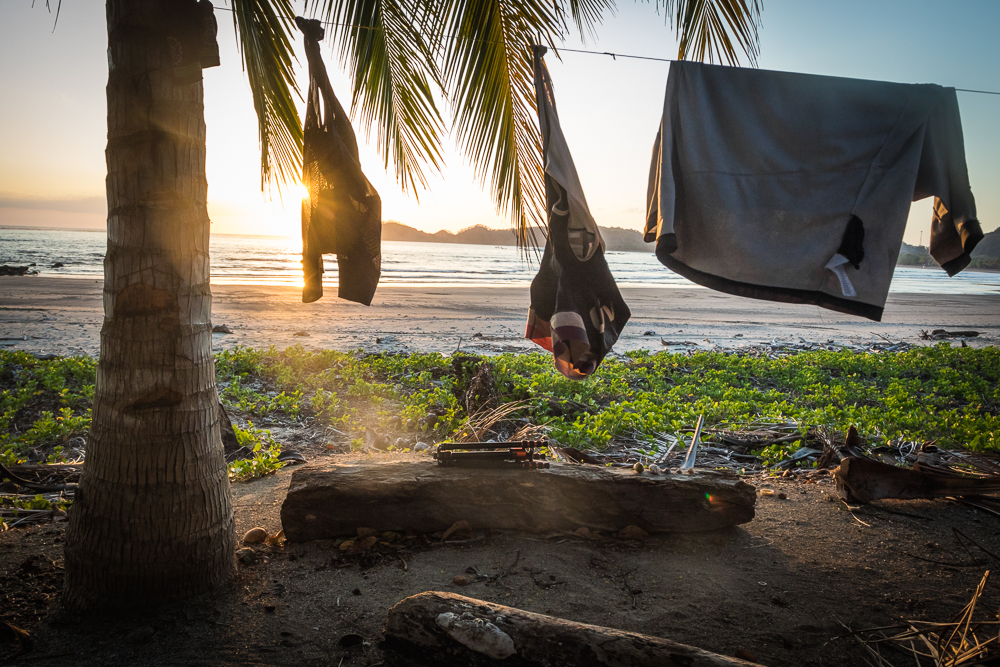Costa Rica Travel – Adventure photographer Riley Seebeck moved to Costa Rica‘s quiet Nicoya Peninsula to build trails. But in between the grunt work, he’s tested some other skills with a fun form of outdoor adventure: bikepacking.
The concept means something different to every rider, but basically bikepacking is loading up only the essentials in saddlebags for a multi-day excursion. For Seebeck, it was a six-day, 111-mile moving vacation with friends, filled with plenty of riding — and relaxing.
Because he was hauling camera gear, Seebeck packed extra light: a Big Agnes Blacktail tent, a tank top, swimming shorts, one pair of bike shorts, two chamois, two pairs of socks and two 3-liter Hydrapak collapsibles — a water reservoir for camp and a bladder with hose for rides.
“The reservoir was really great because I didn’t have to rely on just one bag to hold water, plus it only weighs a couple grams when empty,” Seebeck told GrindTV.
Water was essential. “The toughest part of the trip was absolutely the heat. The sun here shines every day with zero cloud cover, which makes you feel like the sun is trying to kill you,” he says.
“It would reach the mid-90s almost every day around 10 a.m. We planned to beat the heat and get to our next stop each day, but that proved challenging when we underestimated the map.”
Terrain along the peninsula was mostly gravel roads in undulating foothills, with a small section of grassy singletrack. Seebeck’s group of three didn’t encounter anything scarier than wading waist-deep in a crocodile-infested inlet.
Each night ended on a new beach.
“We planned for a more chill approach, with only 25 miles per day and filling the rest of the day with snorkeling and napping on the beach,” Seebeck wrote in his blog. “The nights were filled with relaxing rhythms of waves, warm sea breeze and shell hunting.”
Along with some beautiful memories, Seebeck brought back some tips for other aspiring bikepackers, especially those who like to take pictures:
Secure Your Setup First
Although Seebeck jury-rigged a PVC piping setup, next time he’s hoping for a frame bag from High Above.
“It was hard to handle camera gear and still be able to shoot on the spot for candid moments,” he says. “I was either pulling the camera out or having it flop around on my neck connected to the strap while we rode.”
His wish list: a triangle-frame rear saddlebag to store things you don’t need to get at fast, a custom camera bag to eliminate riding with a backpack, and a big handlebar bag for goodies.
Savor the Local Fare and Eat Cheap
Seebeck’s goal was to spend as little and savor as much as possible on the bikepack trip. “Passing through traditional little towns along the way also gave us a good break for some great traditional food know as casados,” he wrote. “I’ve really come to love these gracious helpings of salchichon (sausage), rice and beans, and eggs.”
The bikepack group found the ultimate dirtbag combo was free beach camping, a hearty casados for lunch and dinner ($10 total) and an occasional pit stop at the market ($5 to $10).
Slow Down and Adjust for the Sun
“The sun is always really harsh on the coast. I usually find some of my best shots during golden hours (early morning and sunset),” Seebeck says.
“Textures are everywhere, though, and can really capture people’s eye. Here, I tend to overexpose my photography to pull out more shadows, as I am only shooting with a crop sensor, which has a harder time picking up sharp detail in low light.
“Life is abundant here, so slow down and look around; you might see something you had no idea was even there.”
His ultimate tip?
“Go on more adventures. Seriously. Trips always make me feel full of life,” Seebeck says. “You have time to learn about yourself and experience the simple things around you.”
By Julie Kailus, From GrindTV



